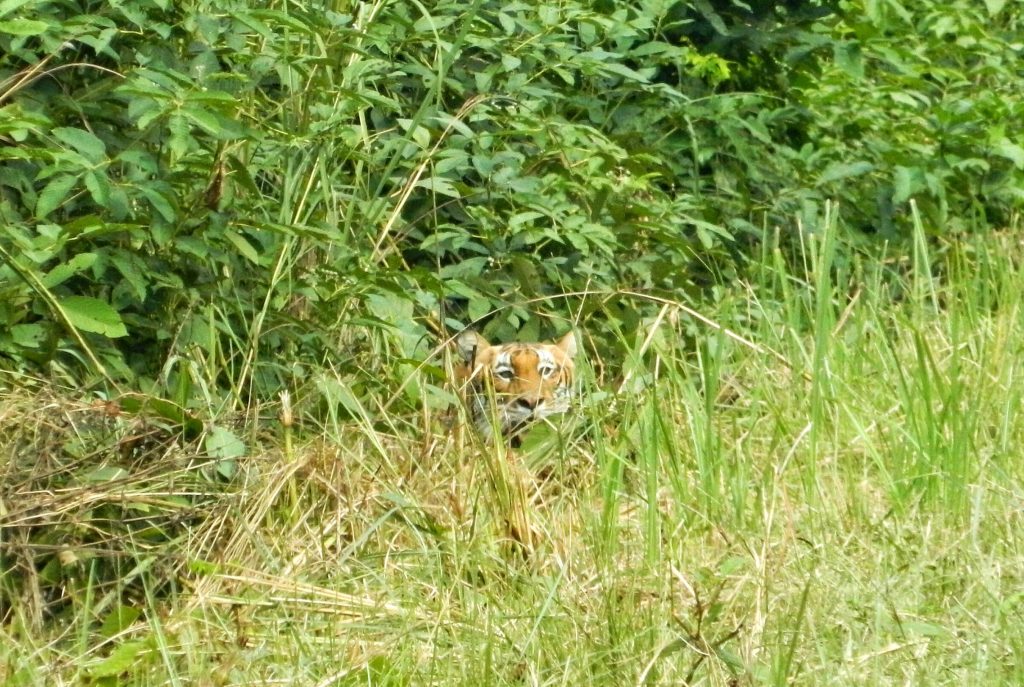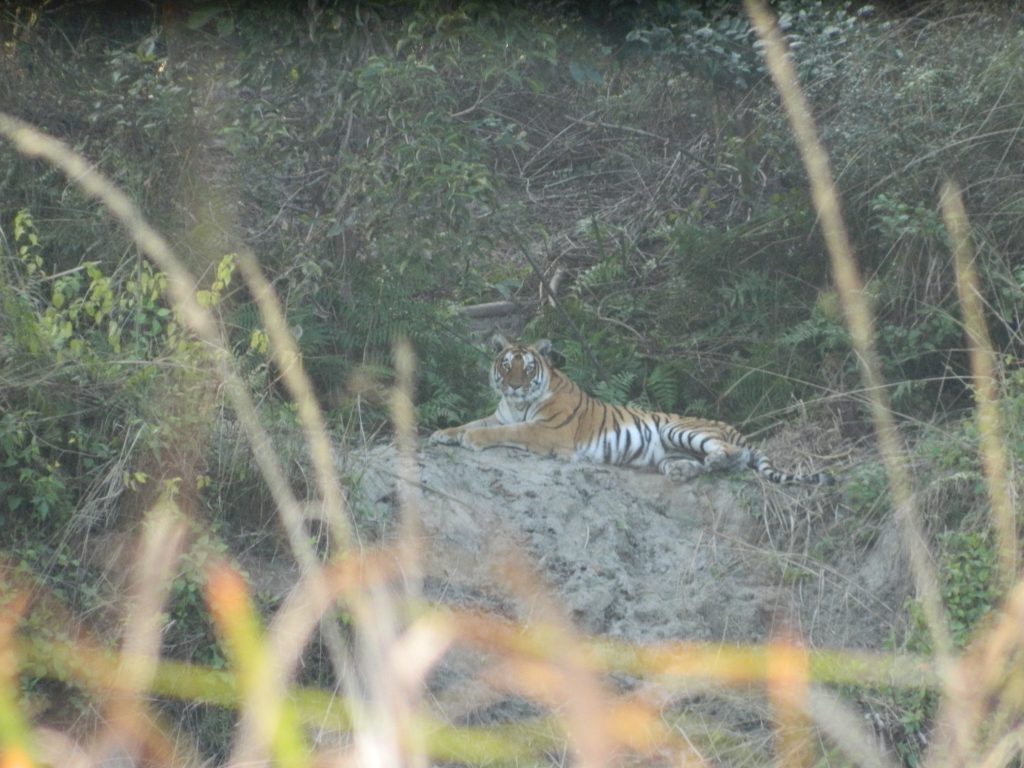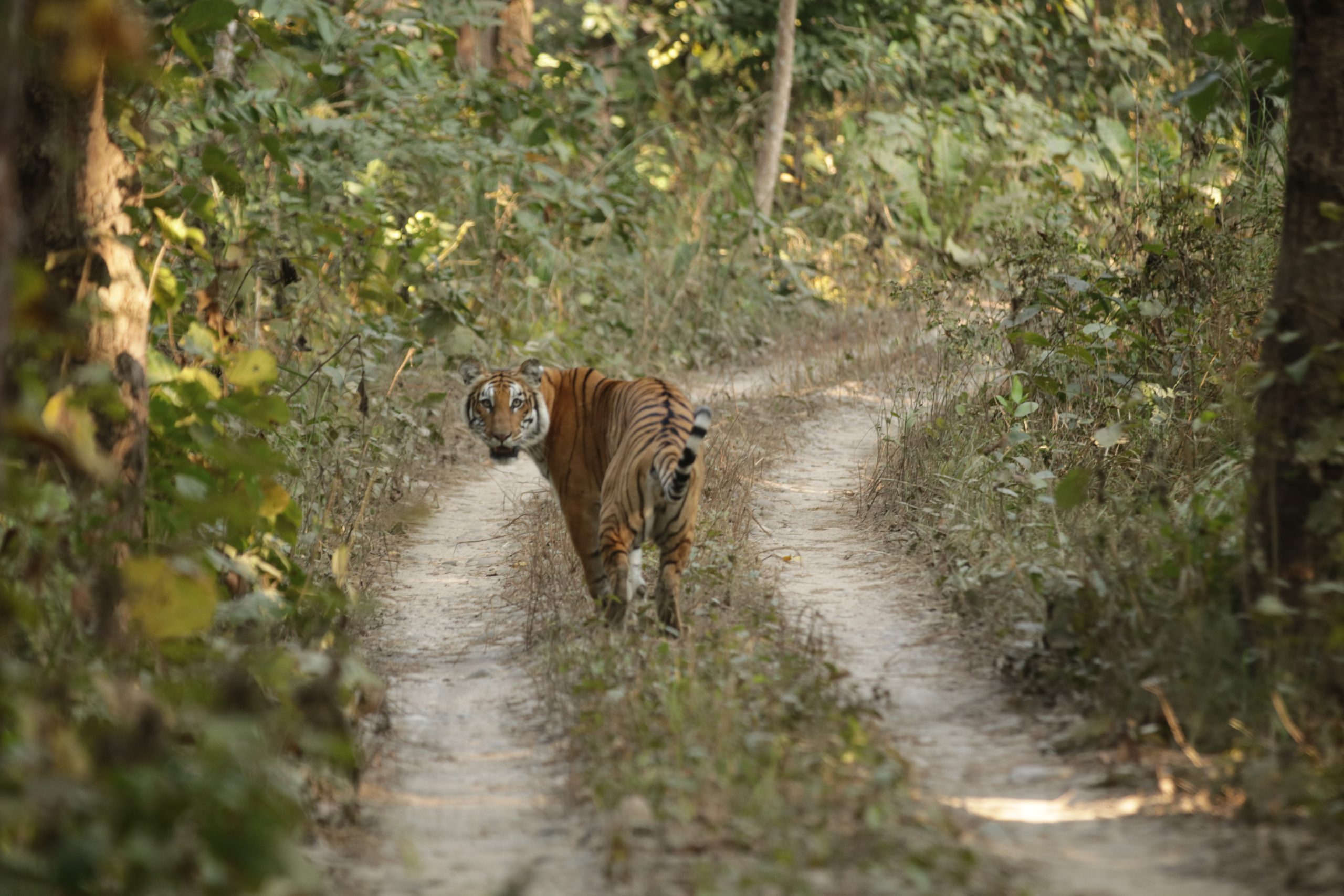Nepal’s Tiger Victory: How Local Communities and Tourists Are Powering a Conservation Success Story in Chitwan and Bardiya – Published by Red Reach Himalaya
Date: July 31 2025
From Threatened to Thriving: Nepal’s Tiger Comeback – Nepal’s Tiger Victory
Just over a decade ago, the future of the Royal Bengal Tiger in Nepal looked uncertain. In 2009, only 121 tigers were counted across the country’s protected areas. But through strong conservation efforts and community involvement, Nepal’s tiger population has more than doubled to 355 as of 2022. This remarkable recovery makes Nepal a global leader in tiger conservation and a powerful example of how humans and nature can coexist.

Why Are Tiger Numbers Increasing in Nepal?
Nepal’s success is the result of several key factors:
- Effective Anti-Poaching Initiatives
The government and park authorities have implemented advanced monitoring technologies, such as camera traps and GPS tracking, and increased ranger patrols. These measures have significantly reduced poaching. - Community-Based Conservation Programs
Local communities living near the parks are now actively involved in protecting wildlife. Through buffer zone programs, they receive benefits from tourism revenue, giving them a direct stake in conservation. - Expansion of Protected Areas and Wildlife Corridors
Protected habitats have been expanded and linked through corridors, allowing tigers to roam freely between national parks like Bardiya, Banke, and Parsa, supporting population growth. - Education and Awareness
Conservation education in schools and communities has fostered greater respect for wildlife and the environment among Nepal’s younger generations.
Where Are Nepal’s Tigers?
The main national parks with tiger populations are:
- Chitwan National Park – approximately 128 tigers
- Bardiya National Park – approximately 125 tigers
- Parsa National Park – approximately 41 tigers
- Banke National Park – approximately 25 tigers
These parks provide vast forests, grasslands, and riverine habitats essential for tiger survival.
Local Communities: The True Guardians of the Forest for Nepal’s Tiger Victory
The success of tiger conservation in Nepal is deeply linked to the people who live alongside these animals. Indigenous communities such as the Tharu and Chepang have shifted from being wary of wildlife to becoming its protectors.
Villagers now work as eco-guides, anti-poaching scouts, and homestay hosts. They also build protective enclosures for their livestock to reduce conflicts with predators. Importantly, they receive a significant share of income from tourism activities in the parks, creating sustainable livelihoods that support conservation.
Why Visit Chitwan and Bardiya National Parks?
While Nepal is famous for its Himalayan treks, its lowland national parks offer some of the best wildlife experiences in Asia.
- Nepal’s first national park and a UNESCO World Heritage Site
- Offers jeep safaris, canoe rides, bird watching, and cultural performances
- Easily accessible from Kathmandu and Pokhara
- Can be combined with short treks like Poon Hill or visits to cultural towns such as Bandipur
Bardiya National Park
- Less crowded and less commercialized than Chitwan, offering a more authentic jungle experience
- One of the best places to spot wild tigers in Asia
- Ideal for adventurous travelers and photographers
- Easily combined with treks to Rara Lake or cultural tours in western Nepal
Both parks are also home to one-horned rhinos, elephants, leopards, sloth bears, and over 500 species of birds.
Combining Tiger Safari with Trekking
Modern travelers seek variety, and Nepal delivers by allowing you to combine thrilling tiger safaris with spectacular trekking.
Popular combinations include:
- Chitwan safari paired with Poon Hill or Mardi Himal trek
- Bardiya safari with Rara Lake trek or cultural walks in western Nepal
- Wildlife exploration followed by heritage tours in Kathmandu Valley
This blend of jungle and mountain adventures provides a rich and diverse Nepal experience.
What Makes Nepal’s Tiger Tourism Different?
Nepal emphasizes sustainable, community-based tourism. Most lodges and homestays near national parks are locally owned and operated, and guides come from nearby villages. This approach ensures that tourism benefits both people and wildlife.
By visiting Nepal’s parks responsibly, travelers support conservation efforts and help protect these endangered animals for future generations.
Travel Tips
- Best time to visit for tiger safaris: October to March
- Recommended stay: 2 to 3 nights in Chitwan or Bardiya
- Access:
- Chitwan National Park can be reached by a 4-5 hour drive or a 25-minute flight from Kathmandu
- Bardiya National Park requires a longer journey—either a 10-12 hour drive or a flight to Nepalgunj followed by a 2-hour drive
Recent studies suggest that Nepal’s national parks have the capacity to support up to 400 tigers in the near future, indicating even greater potential for this majestic species to thrive. With ongoing conservation efforts and growing community involvement, Nepal is well on its way to securing a strong and sustainable future for its tigers.
Final Thoughts – Nepal’s Tiger Victory
Nepal’s tiger victory is a story of resilience, cooperation, and hope. Through the combined efforts of government, communities, and tourists, the Royal Bengal Tiger has made an inspiring comeback.
When planning your next Nepal trip, consider adding a national park safari to your itinerary. Witnessing these magnificent animals in the wild is an unforgettable experience and a meaningful way to contribute to one of the world’s greatest conservation success stories.

Planning a visit? We’ve got you covered.
At Red Reach Himalaya, we offer carefully curated trips to Chitwan and Bardiya National Parks. From the best eco-lodges to experienced local wildlife guides, we ensure your jungle adventure is both thrilling and responsible.
Explore our packages today and make your Nepal journey truly unforgettable. See Our Wildlife Safari Packages for Bardiya and Chitwan National Park See you in Nepal.
